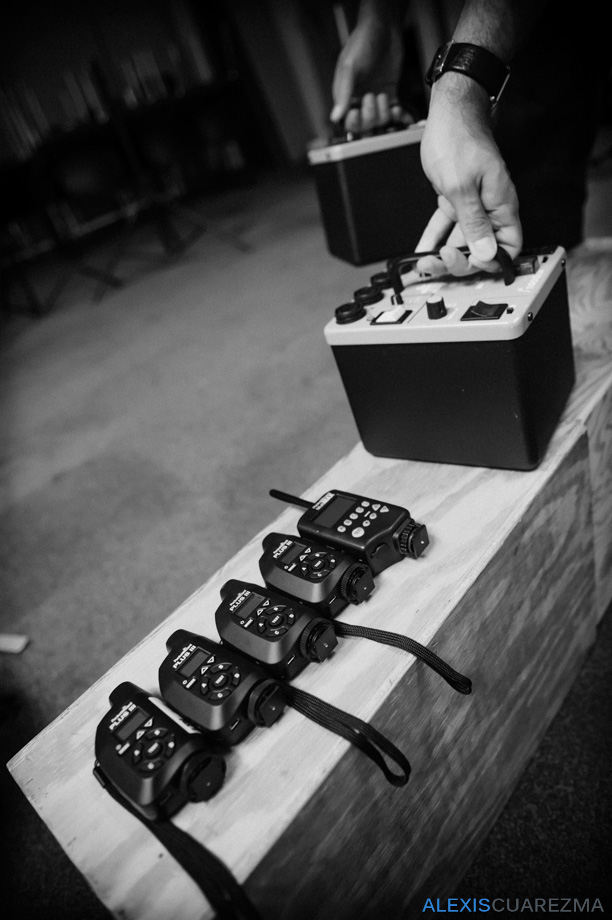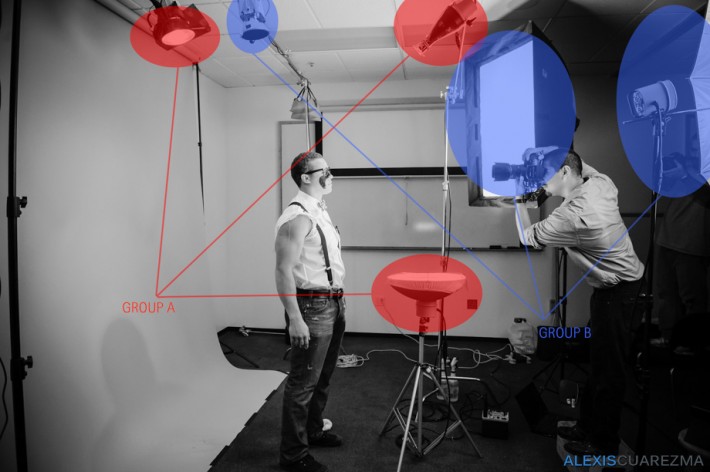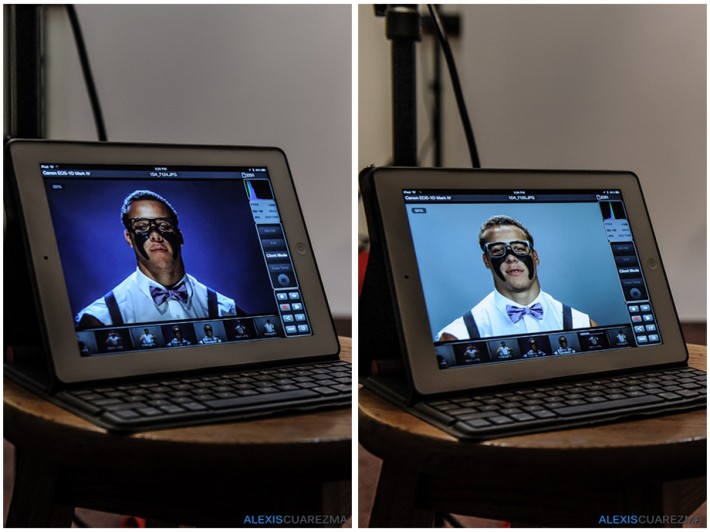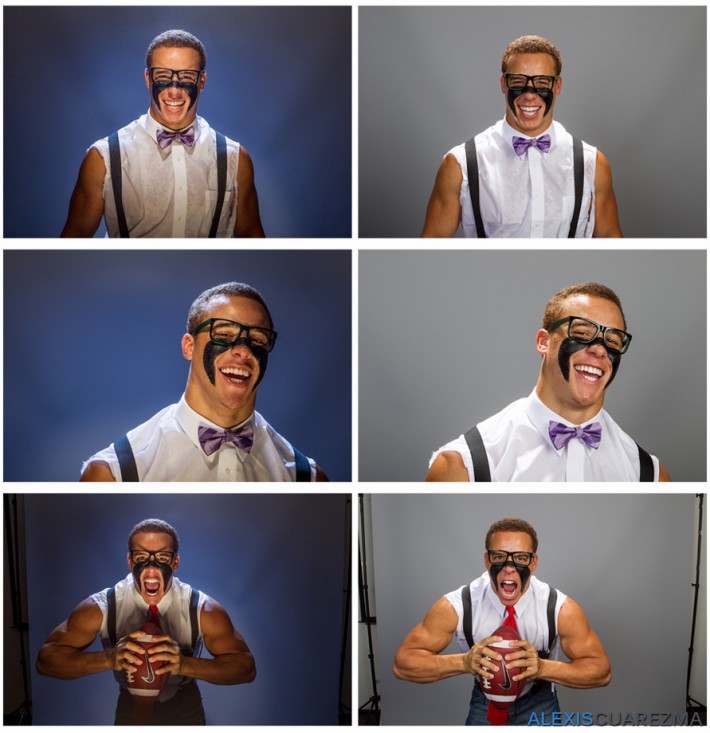You might someday find yourself working within the overall vision of someone else – like an editor, an art director or, in this case, a director of photography – when shooting on assignment for publications as big as Sports Illustrated. Limited time with your subject and being asked for simple lighting against a simple background isn’t uncommon in this industry. So how would you go about getting the type of photographs your employer wants plus creating a dramatically lit and colored set for yourself?
It's an audacious maneuver and seemingly impossible under these constraints, but Alexis Cuarezma explains how he dared to capture two completely different images of former Stanford linebacker Shayne Skov every time he pressed his camera's shutter button.
What has been the best unexpected early birthday present you’ve ever gotten?? For me, last July it was getting a call from Brad Smith, the Director of Photographer [sic] at Sports Illustrated to shoot an assignment. There’s no way in the world I would turn this down or not be available. Then he started to tell me what he was looking for visually. He told me to keep the lighting simply and straight forward with the grey seamless, and that they would cut out Shayne and replace the background in post. I knew exactly in my mind how he wanted the image lit and what he was looking for. As soon as he told me this, it became bitter/sweet for me. Yes, it’s a dream to get an assignment from Sports Illustrated, and it would be a nice tear sheet to have, but regardless where it’s published I wouldn’t be proud to have an image lit like that. I LOVE lighting dramatic, I LOVE light fall off, I LOVE using real finicky lighting setups that aren’t simple to light and are dark & dramatic. I also know that for assignments like this, time is precious. So what did I do with this amazing opportunity & first assignment for SI??
I didn’t listen to what I was told! At least on the keeping it simple part.

Alexis went to work designing the look that his boss requested and a vastly different one more suited to his style. When it came down to choosing how to control everything, he decided to make use of Pocket Wizard transceivers: one MultiMax as his trigger and four Plus IIIs to bang off his lights. The MultiMax was key, though. It has an advanced feature called the SpeedCycler that allows for sequential triggering of up to four light units. Also, both the Plus III and MultiMax transceivers allow for quad-zone triggering that you can set in groups lettered A through D.

What he now had was the ability to separate the two looks into different lettered groups and to fire them off one after another by simply holding down his camera's shutter button. The Canon 1D Mark IV that he used shoots up to ten frames per second. That's one image every 100 milliseconds! This made getting expressions within successive photos practically identical as opposed to what a camera with a slower FPS rate could capture.
Here's a great view of how his setup was arranged.


Did you notice that he used six lights but only had four Plus III receivers to operate them? It took me a few minutes to figure out what he did. He used Dynalite flash heads and power packs. Each power pack can control up to four heads, so he plugged two of them into each pack, and then only needed two Plus III receivers for four of his lights. Pretty smart!
Alexis also chose a wireless tether with the iUSBport Camera Wireless Transmitter so he could share the photos he was taking through his iPad.

All this extra work and stress was completely worth it in the end because I was able to make images for myself in the style I like and also do what was expected of me. I strongly believe that whenever you’re shooting regardless if it’s a paid assignment or personal shoot that you should always shoot and do something for yourself whenever possible. Do something that makes you proud. If you’re just following directions or only doing what’s expected of you or what you’re being told to do then you’re just doing a job and going through the motions. And what’s the point in that?
I love what Alexis did. Providing a client what they want as well as giving them added value in an option they didn't even expect is a great way to do business. Sports Illustrated must have thought so too, because they chose to use the images from his custom, edgier lighting for the story they ran.


Be sure to check out his behind the scenes video where he explains the shoot even further.
Have you ever done any complex lighting like this before?
Share your experience and thoughts with us below in the comments!
You can read Alexis Cuarezma's full article at his blog, and you can follow him on Instagram and Twitter for more updates and behind the scenes insight.





![[Review] FlashBender Diffusion Panel, FlashBender, and Rogue Universal Lighting Filter Kit](https://cdn.fstoppers.com/styles/small-16-9/s3/wp-content/uploads/2012/04/rogue-008.jpg)

Alexis Cuarezma is THE MAN! I've been inspired by his lighting technique for quite some time and this is really out-of-the-box thinking. Good job, man!
@joeercoli:disqus, thanks for the kind words man!! We gotta do lunch again sometime soon. Just completed the shoot I was telling you about.
Alexis should patent this!
This is amazing! Quick question and sorry if this is really obvious but if the iUSBport is on the hotshoe, how is the MultiMax attached to the camera?
Michelle, the iUSBport is really only connected to the USB port on the camera. The transmitting unit only has a cold shoe (no electronic connection). you can mount the transmitter anywhere.
it shows in the video, he has it on a straight bracket attached to the tripod mount.
Thanks Lane & Jayson!
Hi @michellealger:disqus, sorry for the delayed reply. @jaysoncarey:disqus answered it right. I had a straight bracket attached to the tripod mount of the camera on the PW on it. The PW was connected to the camera via hard wire since the bracket is cold shoe mount.
best,
-Alexis
Bad ass!!!!!
oh great so you can put twice as many lights in it and disable some.. genius.....
are you people plain stupid or what?
of course you can do this.. still you have to setup two differnet light setups..
Interesting concept, I doubt I'll ever do it, but what a great idea to save time and give yourself extra options! Love it.
Very cleaver! I did a shoot last week where I wanted two different lighting setups for each subject, but I manually turned on/off the zones with the AC3 in between shots. The PW speedcycle option would have made this much quicker and simpler. I had no idea that this function existed...perhaps it's time for a PW refresher course! Thanks for the tip!!